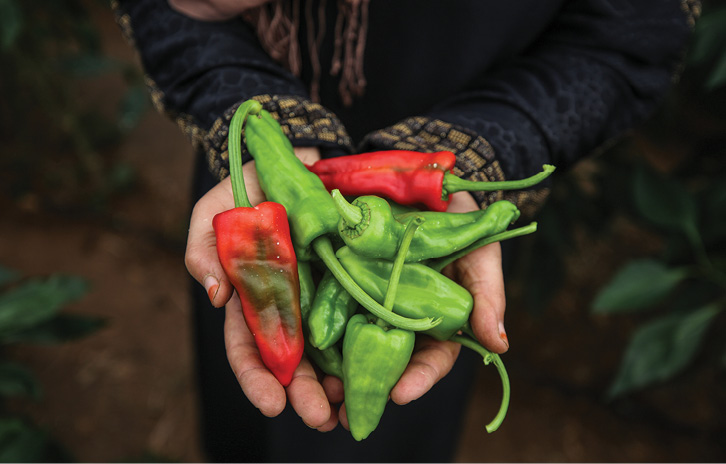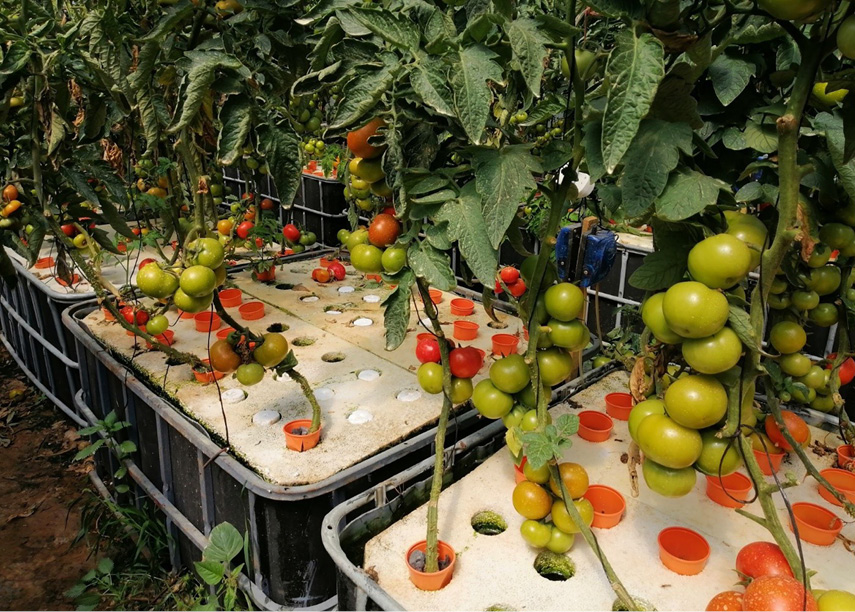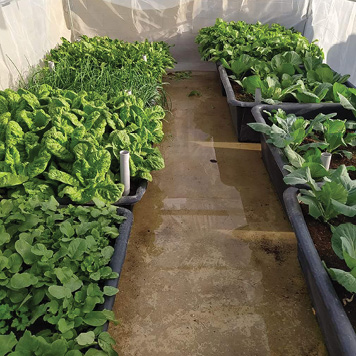
From July 2019 to March 2020, the World Food Programme (WFP) Country Office in Palestine ran the first round of experiments on climate resilience for food security by providing some of the poorest and severely food-insecure households across the West Bank and Gaza with a range of climate-resilient agricultural livelihood assets in an effort to improve their immediate food security and nutritional needs. The pilot also aimed to assess which of these assets have an optimal correlation of viability, productivity, and cost-benefit ratio that – if brought to scale – could meaningfully bolster resilience and ultimately empower the self-reliance of vulnerable people and communities in the face of climate-generated shocks.

By prioritizing households living under the deep poverty line, WFP intends to leverage its expertise in applying innovative approaches to transforming the ongoing food-security crisis into development opportunities by diversifying livelihood strategies and reducing aid dependency in Palestine. By focusing on women-headed families, WFP continues to support the creation of an enabling environment for gender equality and women’s empowerment, given the vital role of women in promoting lasting solutions for food insecurity.
The first round of the pilot was informed in part by WFP’s experience with climate-resilient projects in other countries to identify the most feasible options that are best suited to the Palestinian context.
The project was run in cooperation with the Palestinian Authority’s Ministry of Social Development and Ministry of Agriculture, implemented in partnership with the Applied Research Institute Jerusalem, Oxfam, and MA’AN Development Center, and coordinated with a range of other stakeholders such as local universities, NGOs and UN agencies.
The WFP Country Office in Palestine has provided some of the poorest and severely food-insecure households across the West Bank and Gaza with a range of climate-resilient agricultural assets to improve their immediate food-security needs and generate greater self-reliance in the face of climate-generated shocks.
The first round of the pilot provided 192 Palestinian families (over 1,300 individuals) in the West Bank and Gaza with climate-resilient agriculture (CRA) assets and training based on their priorities and capacities. The assets ranged from hydroponic food and green-fodder production units to wicking beds, home gardens, floating beds, greenhouses, and livestock. Training and coaching were provided to beneficiaries to boost their technical skills to effectively use CRA to harvest and consume fresh vegetables, produce fodder, and sell any surplus produce, thus increasing their own resilience and boosting local food and fodder production.
Cost-benefit analysis
The results of an independent cost-benefit analysis (CBA) and partners’ final reports demonstrated the success of the targeted CRA interventions – though some more than others. They helped families improve their food security, dietary diversity, and, in some instances, livelihood through income generation, thus paving the way for the second round that started in June 2020.
The CBA concluded that the hydroponic production of animal feed and vegetables at the household level is by far the most technically feasible and economically viable implementation, outperforming other systems tested.
A range of indicators suggests that growing animal feed hydroponically at the household level is particularly suitable for long-term investment. The cost of fodder alone often accounts for 70 to 85 percent of overall livestock production costs since Palestine imports most of its fodder. Therefore, an increase in local fodder production through hydroponics can contribute to the livestock sector’s resilience in the face of natural and human-made shocks and decrease meat-production costs. Within a single month of growing animal fodder, the involved families saved enough money to carry the second month’s running costs, even when only using 50 percent of production capacity. If used at full capacity, one unit can generate enough fresh fodder to replace 25 percent of the bought feed and fully sustain eight goats over one month. Moreover, hydroponic animal-feed production is environmentally friendly, as it uses 75 percent less space and up to 90 percent less water than traditional agricultural production – a finding of considerable importance in contexts with a scarcity of natural resources and high population density, as is the case in the Gaza Strip.

Hydroponic vegetable production turns out to be another area worth the investment on both the household and institutional levels, with floating-bed systems being the optimal choice, as the benefits are up to 2.5 times greater than the costs.
Thus, the CBA concludes that climate-resilient asset creation is an effective tool for the diversification of livelihood strategies and, if brought to scale, can reduce food insecurity, the vulnerability to shocks, and aid dependency even beyond the household level in Palestine.
Results
In addition to the cost-benefit analysis, the pilot generated a range of tangible results given its relatively short time span: During the first round of the pilot, over 13,800 kilograms of vegetables from home gardens and wicking beds and over 2,000 liters of milk were produced. Nine out of the eleven families that had received 400 chickens each in Gaza started new production cycles. The number of sheep distributed across 48 households had doubled by the end of the pilot period, enhancing food availability at the local level. On average, 39 percent of all interviewed beneficiaries reported earning additional income from selling excess produce, with home gardening and wicking beds being the most conducive to income generation.
The resilience activity also demonstrates a whole set of additional benefits reported by beneficiaries, such as increased self-esteem, a sense of empowerment due to enhanced productivity, and improved relationships within the family and with neighbors.
Lessons learned and the way forward
Given the feedback from participating families and insights from implementing partners, the first round of the pilot generated a number of valuable lessons that will further inform the subsequent rounds of the experiment. For example, plant production was found to be the most efficient intervention with the highest impact on food security and resilience – especially the wicking beds – as opposed to raising livestock, which seems more complicated, requires technical knowledge, and, in turn, provides lower yield in the short term.

Family size and composition, commitment, and capacity need to be taken more into consideration. Households that are able and willing to produce more should be equipped to do so. Gender sensitivities need to be better streamlined in the second round, during both beneficiary selection and coaching activities to support women’s empowerment while avoiding the risk of placing additional burdens on them.
Finally, coordination with local actors was noted as key and should be replicated in further rounds to increase national capacities. WFP will continue to hold regular steering committee meetings that have served as a great platform for WFP to bring all partners together for an update on progress and to raise challenges and discuss ways to address them.
Following the success of the first round, WFP in Palestine received additional funding to commence the second round, which is expected to be completed by the end of March 2021. The new round includes reaching out to an additional 200 households, scaling up support to some beneficiaries from the first round, and including institutional entities such as cooperatives and women’s centers.
By closely monitoring the results of the pilot, including through an elaborate cost-benefit analysis, WFP hopes to generate enough evidence to encourage additional funding to bring the project to scale and to continue developing climate resilience as a means to decrease food insecurity, vulnerability to shocks, and aid dependency even beyond the household level and project duration.


